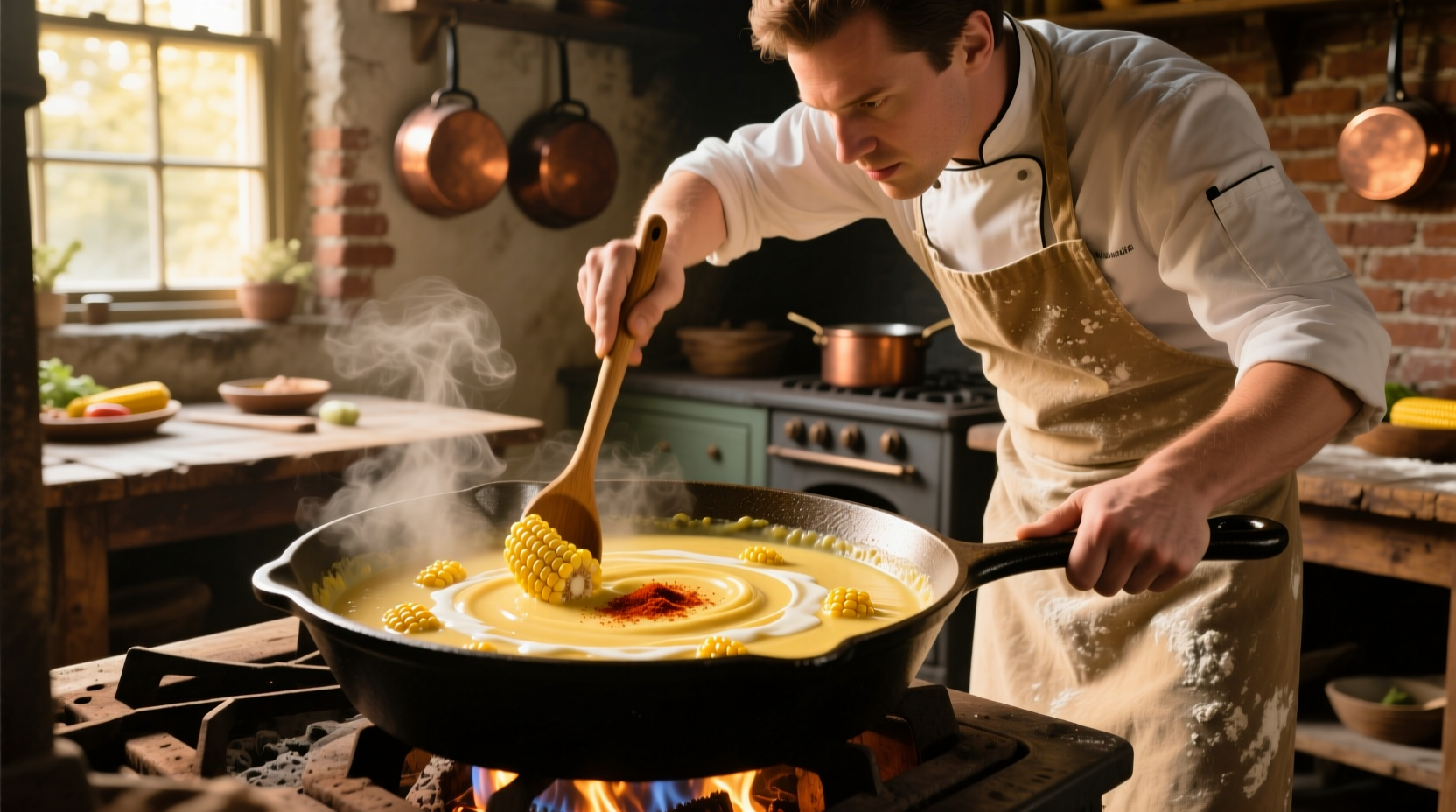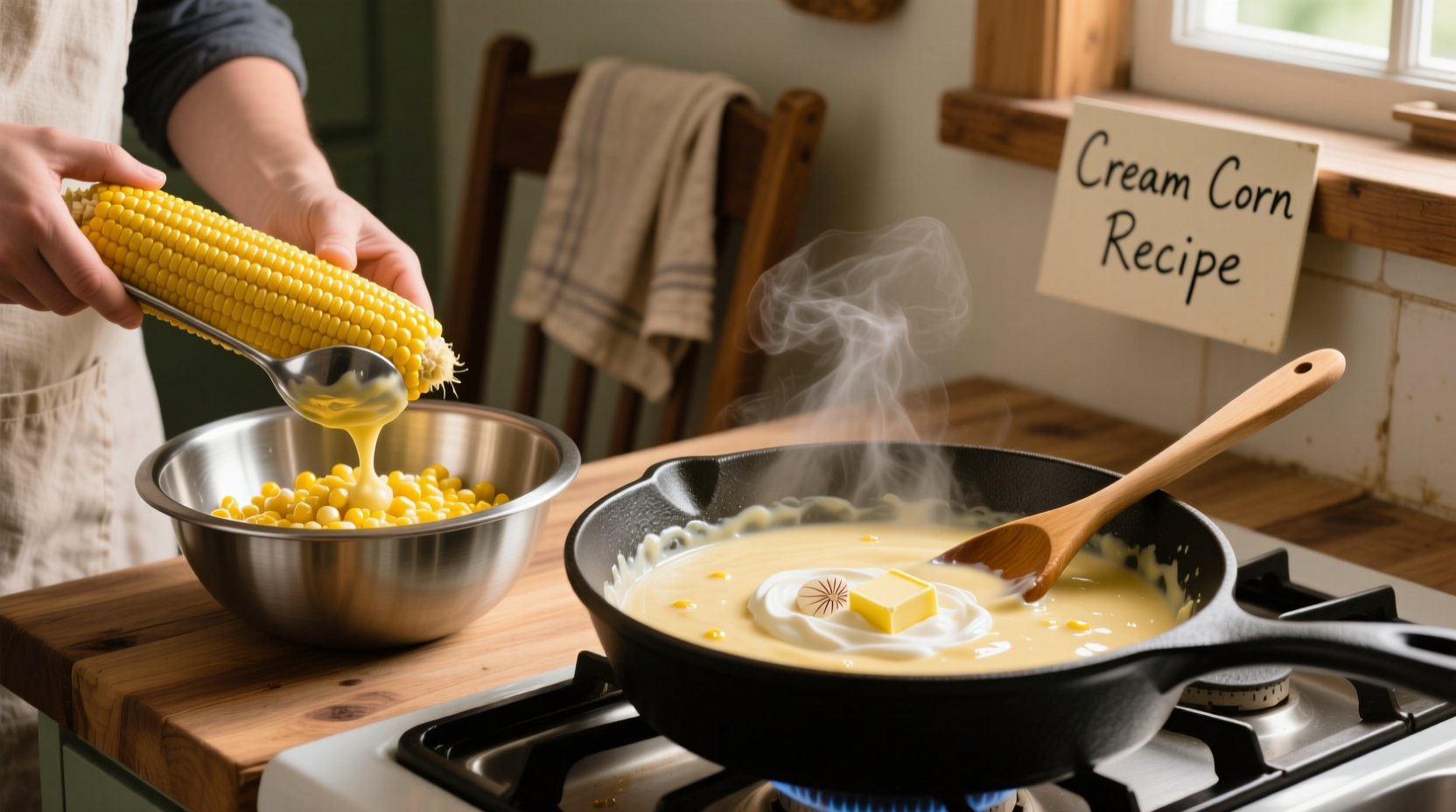Learn how to cook cream corn from scratch with this professional chef-tested method. The perfect creamed corn requires fresh or frozen corn kernels, a small amount of cream or milk, butter, and a thickening technique that creates that signature creamy texture without relying on canned soup. This 20-minute stovetop recipe yields rich, sweet, and velvety cream corn that's far superior to store-bought versions.
There's nothing quite like homemade cream corn to elevate your dinner table. Forget the canned versions loaded with preservatives—this authentic method creates a luxuriously creamy side dish that highlights corn's natural sweetness while achieving that perfect silky texture. As a chef who's cooked in both fine dining establishments and home kitchens, I've perfected this technique through years of testing different approaches.
Why This Cream Corn Method Works
Many home cooks struggle with cream corn that turns out either watery or overly starchy. The secret lies in a two-part thickening process that professional kitchens use but rarely share. Instead of relying solely on flour or cornstarch, we use a portion of the corn itself to create natural thickening while preserving fresh flavor.
| Preparation Method | Texture Quality | Flavor Authenticity | Prep Time |
|---|---|---|---|
| Canned cream corn | Moderate (often grainy) | Low (metallic notes) | 2 minutes |
| Canned soup-based | High (but artificial) | Low (processed) | 10 minutes |
| From-scratch method | Superior (silky) | Exceptional (pure corn) | 20 minutes |
Essential Ingredients for Perfect Cream Corn
The beauty of this recipe is its simplicity—just five core ingredients plus seasoning. For the best results, use fresh corn when in season (June through September in most regions), but high-quality frozen corn works year-round.
- Corn kernels: 4 cups (about 6 ears fresh or 16oz frozen)
- Heavy cream or whole milk: ½ cup (for authentic richness)
- Butter: 2 tablespoons (unsalted)
- Cornstarch: 1 tablespoon (mixed with 2 tablespoons cold water)
- Salt: to taste (about ½ teaspoon)

Step-by-Step Cooking Process
Preparation Phase
Begin by separating one-third of your corn kernels and placing them in a blender with ¼ cup of your cream or milk. Blend until smooth—this creates your natural thickener while preserving corn flavor. The remaining corn kernels should stay whole for texture.
Cooking Sequence
- Melt butter in a medium saucepan over medium heat
- Add whole corn kernels and sauté for 2-3 minutes until slightly tender
- Pour in the blended corn mixture and remaining cream
- Bring to a gentle simmer (do not boil vigorously)
- Slowly whisk in the cornstarch slurry
- Cook for 3-5 minutes until thickened to your preferred consistency
- Season with salt to taste
Avoiding Common Mistakes
Based on my experience teaching cooking classes, these three pitfalls cause most cream corn failures:
- Over-thickening: Adding too much cornstarch creates a gummy texture. Start with less—you can always add more if needed.
- High heat: Boiling destroys corn's delicate flavor. Maintain a gentle simmer throughout cooking.
- Under-seasoning: Corn needs proper salt to enhance its natural sweetness. Taste and adjust before serving.
Variations for Different Dietary Needs
This base recipe adapts beautifully to various preferences:
- Dairy-free version: Substitute coconut milk for cream and use olive oil instead of butter
- Extra-rich version: Add 2 tablespoons of cream cheese during the final minute of cooking
- Spiced variation: Stir in ¼ teaspoon smoked paprika or a pinch of cayenne for depth
When to Use Fresh vs. Frozen Corn
While fresh corn produces the most vibrant flavor during peak season, modern flash-freezing techniques preserve sweetness remarkably well. According to agricultural research from the University of Illinois Extension, frozen corn often contains higher sugar levels than fresh corn shipped long distances. The key is using corn frozen at peak ripeness rather than off-season fresh corn that's been in storage.
Serving Suggestions and Storage
Cream corn pairs beautifully with grilled meats, roasted poultry, or as part of a holiday dinner spread. For best results, serve immediately while the texture is at its creamiest. Leftovers can be stored in an airtight container in the refrigerator for up to three days—reheat gently with a splash of cream to restore texture.
Traditional Evolution of Creamed Corn
Creamed corn has evolved significantly from its origins. Early 20th century recipes relied on actual cream and careful reduction. The 1950s introduced canned versions for convenience, while modern techniques blend traditional methods with contemporary understanding of food science. Today's best approaches honor the dish's heritage while optimizing texture and flavor through controlled thickening—exactly what this recipe delivers.











 浙公网安备
33010002000092号
浙公网安备
33010002000092号 浙B2-20120091-4
浙B2-20120091-4